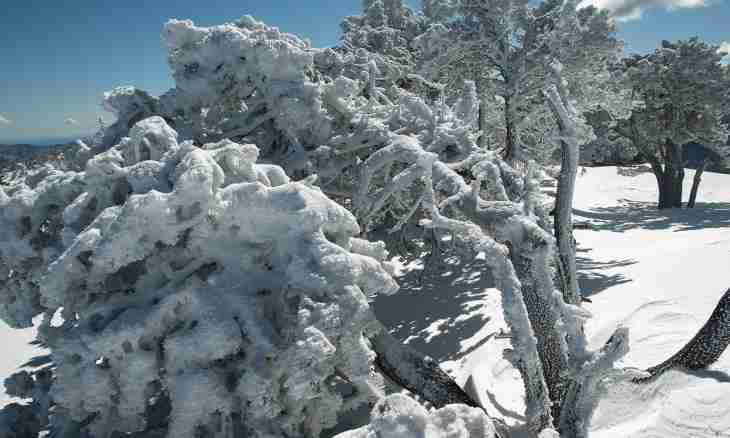The fine white symbol of northern winter happens absolutely different types differing in structure and density. There is a scientific classification of snow and also the classification created by professional athletes – snowboarders and mountain skiers.
Glaciological classification
In terms of the science which is engaged in studying snow and ice – glaciology, it is possible to classify snow in various ways. On the crystal to the building snow is divided into such types: a snow crystal (small separate crystals of a six-sided form up to 3-4 mm in size in the diameter), all the known snowflake (the crystals "linked" among themselves which can form various beautiful forms), hoarfrost (the frozen water crystallizing not in air, and on a surface on which it falls), the grain or "a soft hail" (which froze, but not crystallizing water drops) and the usual hail representing the water drops which froze together in ice.
On intensity of falling the snow can be divided into the following types: easy snow (visibility makes not less than 1000 meters), moderate snowfall (500-1000 m), a heavy snowfall or a blizzard (visibility from 100 to 500 meters). At the strong wind strengthening snowfall there is a snow storm or a snow-storm.
Professional and sports classification
The most frequent classification of snow to which the professional climbers and athletes doing mountain skiing and a snowboard resort proceeds from density and a condition of the snow cover which is already on the earth.
The most weightless and easy is new-fallen snow. In the sports environment it is called also "tselyaky", "virgin soil" or "feather-bed". For most of athletes, the type of snow is considered ideal as on it easily and smoothly to ride and it is possible not to be afraid of blow about a firm surface. The best option of virgin snow for sport "pauder", the smallest and very easy snow which is dropping out only in mountains is considered.
At above-zero temperature the snow thaws and in total with the appeared water forms a sleet or "snow porridge". At constant "utaptyvaniye" of a surface of virgin snow, rigid snow or "kruder" - the dense pressed weight is formed.
For driving such types of snow as a crust are considered as the most unsuccessful (thawed and again the frozen snow crust) and the ice (which was repeatedly thawing and the freezing snow).
It is also possible to allocate such snow formations as firn, representing the mix of snow and ice arising generally at the beginning of spring as a result of very strong consolidation, and a snowfield – very dense snow covered with an ice crust. The last can be met only in mountains where it can not thaw several years. If the snowfield rather big, then over time it can turn into a glacier.

